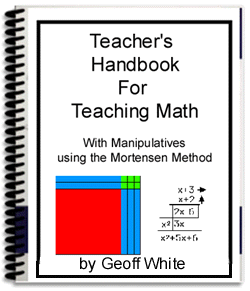The Unreasonable Effectiveness of Mathematics in the Natural Sciences by Eugene Wigner
is a 1960 paper about mathematical structure.Below, a commentary by Geoff White, B.Ed.
Not unreasonable at all
The Wikipedia article on the 1960 Wigner article cites two instances when math seemingly exceeded expectations unreasonably. First, that gravitation, found to work thus and so on earth, should also descibe the movement of distant planets. At the time of Newton few humans had seen plamets through telescopes and perhaps grasped the absolute distances they were from earth, but enough brilliant people had and then it is just a matter of perception and imagination. Given that Saturn is only several orders of magnitude farther from earth than say Australia, anyone who can add indices can do a simple sum and ought really to expect Saturn to obey the same law of gravity. Secondly, Wigner cites Maxwell's equations, derived to model the elementary electrical and magnetic phenomena, and also describe radio waves, discovered about the time of Maxwell's death. Wigner writes that this is "mysterious and that there is no rational explanation for it." But there is, radio waves are electro-magnetic phenomena, and should therefore behave as Maxwell predicted.Wigner asked why the unreasonable effectiveness of mathematics?
It is not unreasonable at all. In fact it should be expected that mathematics would describe the world effectively. What these brilliant and very learned people have overlooked b/c they are too immersed in it, is this. Mathematics and the world share an important common feature: regularity, order, predictability. In other words, math and the world both have order. All math equations are a description of order and relationship. The world has order and is composed of relationships. This must be so since the alternative is disorder or chaos. The first question in philosophy is, is the world chaotic or is it capable of being understood? If it is the former, everything stops right there, but the world is understandable and one way we understand things is to make observations about them and we use language to do that. Mathematics is a suitable language for understanding the world. Indeed it is the language we turn to when words prove to be inadequate. When we cannot describe in words how far something is from us, stars, water, 7/11, we use numbers. When we can't describe the size or scale of something we turn to numbers. Not unreasonable at all.
Wigner wrote that we do not understand why our theories work so well. I think that is very shortsighted. He refers to our theories of the inanimate world where we have a very reliable set of laws and postulates, motion, thermodynamics, etc. Less so in biology and psychology. Above I observed that the common feature in mathematics and the physical world is order and structure. To exist, the material world must have some structure. Mathematics is nothing except structure. From the very concept of number to the simplicity of operations it employs to describe relations, e.g. the inverse square law, the relation of area and distance, to the three-dimensional structure of matter at the scale of medium-sized dry goods (J.L.Austin) math and reality are made of the same stuff.
A mathematical equation describing the speed of water running down a hillside is just an observation written using numbers instead of words. Humans use perceptions and concepts (intuition resulting from sensory experience) to understand the world. Wittgenstein observed that our language reflects the nature and structure of the world. Math is just another human language. We should not be surprised that our math language is effective in describing the world nor that the world is consistent both here, at the distance of Saturn, or GN-z11 or quarks. If it were not, we probably would not exist to talk about it.
London to Sydney = 15,205km or 1.5 times 10^4 km
Earth to Saturn = 1.2 Billion km or 1.2 x 10^9 km
Teacher's Handbook for Teaching Math with Manipulatives
$65 USD - by Paypal only, receive delivery same day by email! (m-f, bus. hrs.)


Table of Contents The Premise P.1 The Five-Minute Overview of the Method P.8 Key Phrases in Mortensen Math Very Brief Summary of the Method Psychological Principles at Work Introduction - cont'd Create a Math-Rich Environment The Teacher's Role & Student Self-Esteem Six Key Ideas from Jerry Mortensen Appendices: Section One - Counting P.46 Section Two - Addition Section Three - Subtraction Section Four - Multiplication Section Five - Division Section Six - Fractions Section Seven - Algebra Section Eight - Solving Equations Section Nine - Functions & Relations Section Ten - Story Problems Section Eleven - Mortensen Math Program & Materials P.240